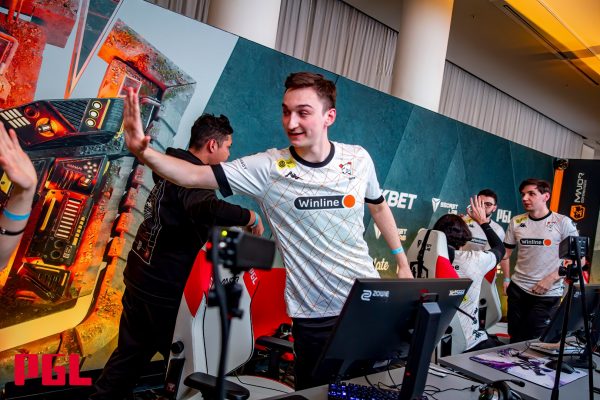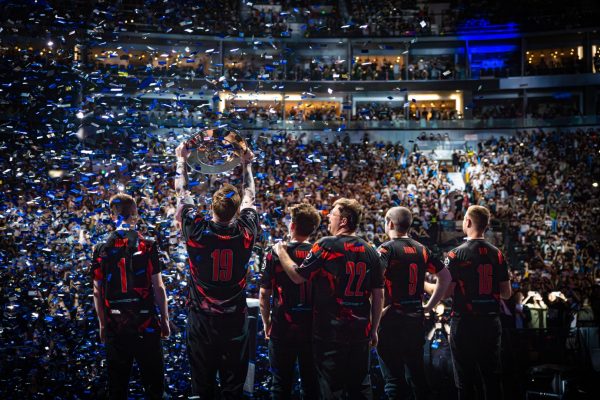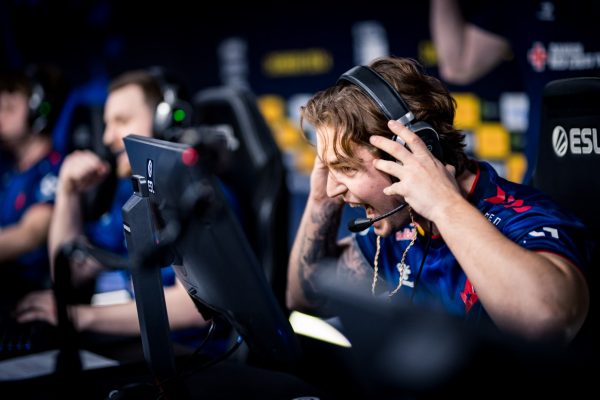Nicolai “dev1ce” Reedtz must have envisaged his move from Astralis to Ninjas in Pyjamas to be a new chapter of his professional journey. At the time though, last April, his decision to move came as a shocker to many within the CS:GO community. It set tongues wagging, newsmen went into a tizzy. The esports reporting media were stunned.
Image Credit: Nicolai "dev1ce" Reedtz' Twitter account
The buyout sum was estimated to be $4.5 million DKK (approximately $700,000), but this wasn’t the most shocking aspect of the move. That dev1ce may have paid a good chunk of this amount out of his own pocket – roughly $1 million DKK, a quarter of his buyout amount – sent shockwaves through the industry and everyone alike. It’s a practice that seemed commonplace at the time it did, except this was the first time such an instance came out into the public domain.
This amount was a combination of his salary and share of earnings generated from the sale of stickers released alongside the CS:GO Major. A portion of it was also dev1ce sacrificing payment he was entitled to. It raised questions over player contracts, financial dealings, payment structures and this entire aspect of modern-day (e)sport functioning that help bring in multi-million dollar revenues.
Transparency, or the lack of it, raised its head time and again in its aftermath, and not without reason. It merely highlighted how the biggest stakeholders were left high and dry when the plea for integrity and legitimacy kept gaining steam.
That dev1ce paid a good chunk of his buyout fee was just one aspect of this entire saga. How things panned out at NiP and their manner of making one of their biggest signings feel under pressure was another thing altogether. The transfer as such didn’t work out, and with dev1ce riddled with personal issues leading to a massive drop in form, his tenure with the team was far from effective towards the latter stages.
Eight months in, dev1ce stepped away from the sport to concentrate on his mental well-being. This was despite helping his team win the BLAST Premier: Fall Groups 2021 and Intel Extreme Masters XVI – Fall: Europe, as well as reach the final of Flashpoint Season 3. Yet, he decided he was done at a time when the world thought he was just revving up.
He should’ve been at an all-time high, yet here he was in the dumps, not knowing where his future lay. He has been away from the competitive circuit since. It’s only now, some 10 months later, that a return has happened.
One of the options doing rounds was his former team, Astralis, the team with which he has won four majors, and also became the winner of the E-League CS:GO Premier 2018, Blast Pro Series Global Final 2019, and the Esports Championship Series Season 5.
But had this been confirmed?
No.
Why not?
Because everything was done in a hush-hush manner.
But don’t fans of the team deserve some clarity?
Of course they do, except teams don’t look at it that way. Teams are often influenced by the narrative played out in the media, and project themselves as victims of misreporting and false information at a time when they have the simple task of ensuring clear communication channels.
Isn’t a statement, on Twitter or Facebook, Instagram or TikTok, or just a simple email from the organisers/owners to their biggest stakeholders – the fans – confirming the interest or that the two parties are talking again after a public fallout too much to ask? Can’t this be the simplest way of reaching out to your community to inform them of a decision that is potentially in the works, and one that could potentially be welcomed like no other in recent memory?
This could so easily cut out speculation. At present, all we know is this: that dev1ce recently found himself back on the Astralis roster. But there were a lot of other questions that could have been answered in the interim: which other teams was he talking to? Did he still want to play an active part at all? Had NiP offered his services to other teams for a sum close to his transfer fee?
Earlier this month, there were also rumours of Astralis being keen on exchanging their sniper Asger “farlig” Jensen for Victor “Staehr” Staehr from Sprout, apart from finding an equivalent replacement for the recently departed Kristian “k0nfig” Wienecke. Farlig joined them just this February and played a key part in their rise. He made it to the top three at the Blast Premier Spring European Showdown 2022, Pinnacle Cup Championship 2022, Roobet Cup 2022, and Intel Extreme Masters XVII Cologne. Yes, recent results may have not gone their way, but for a player with this kind of success and a proven track record deserves better.
“I definitely try not to think about it,” Farlig told HLTV. “If dev1ce comes back what can I do about it, right? It is what it is, all I can do is play the games that I’m going to play, however many that is. Maybe it’s many now, so I try to play them better. Mostly for my own sake because it feels horrible to let down the team, that’s what I’m trying to avoid.”
You can be struck by the opulence, their oligarchic nature. But esports in general needs to be a little more open than just being a coy club, a niche group that controls and drives narratives. The abysmal lack of clarity on important transfer decisions, on key player movements, contract signings and issues with far-reaching ramifications can often leave fans red-faced, and at a time when CS:GO’s popularity is at an unprecedented high.
Such rumours over possible rejigs or new player transfers merely lend credence to the assertions of a select few who drive certain narratives, even if it isn’t entirely authentic. However, if the governing body or the organisers, or even the team, made a definitive statement over a player’s future, in this case dev1ce’s contract fee and how things transpired, things may have not come to pass. As things stand, a comment on the issue can only potentially make things worse.
Addressing such issues with utmost urgency and sincerity is the need of the hour. Hopefully lessons will be learnt from this episode, which is one of many such instances of miscommunication or the lack of it causing major flashpoints. If you don’t keep your biggest stakeholders happy, what do you even stand to gain as a team?
In 2020, there was briefly some kind of a churn when CS:GO made it mandatory for players and teams registering for the Majors to publicly disclose their business relationships with other participants and/or tournament organisers so that public conversations can be had about the value that leagues and other entanglements offer versus the risk that they pose. Failure to disclose these details meant a threat of disqualification. Then there was a mandate to disclose what teams and organisers felt over shared ownership and why it was important to make such declarations public.
At the time, this was seen as a revolutionary move, not least because it could keep certain transgressions in check and bring in total transparency and fair play when it came to the administrative side of things. Two years on, though, things are somewhat back to square one.
In what is seen as an exception from the norm, teams like Cloud9 have made a concerted effort to improve transparency. These have included roster changes and important announcements long before speculation has surrounded the team, providing looks into the contract details of players, including aspects such as contract length and value.
Their signing of young talent Alex “ALEX” McMeekin may have not been pathbreaking, but the release of intricate financial details made such a step unprecedented in esports history. Player salaries are among the most closely-guarded secrets in the esports world, and organisations along with agents have ensured these details are at an arm’s length from the media among others. However, in a sign of maturity, Cloud9 tried to break this trend to live up to the growing sentiment of wanting to be more fan-friendly.
In the same year when Alex’s signing was made official, in 2020, as many as 60 players from 12 different outfits were released in the Call of Duty League, and no explanations were given or reasons communicated to the players or fans. The situation is somewhat better in CS:GO, where players have come together to form an active players’ union to air grievances and solve common issues, among other things. League of Legends also has a union, but they’re still at a nascent stage.
While organisers and leagues take steps, the onus is equally on player unions and player agents to live up to this transparency, and give benchmarks for why players command or make the kind of money they do. In cricket or soccer, for example, such salary details are all in public domain in leagues such as the English Premier League or Indian Premier League. It helps eliminate mistrust, misinformation and gives fans a sense of assuredness.
More teams and players following suit, putting transparency and clear communication at the forefront of their evolution, in a landscape that is ever-evolving, could make things easier for everyone. They owe this much to the fans who make esports what it is.
There’s hope yet.


